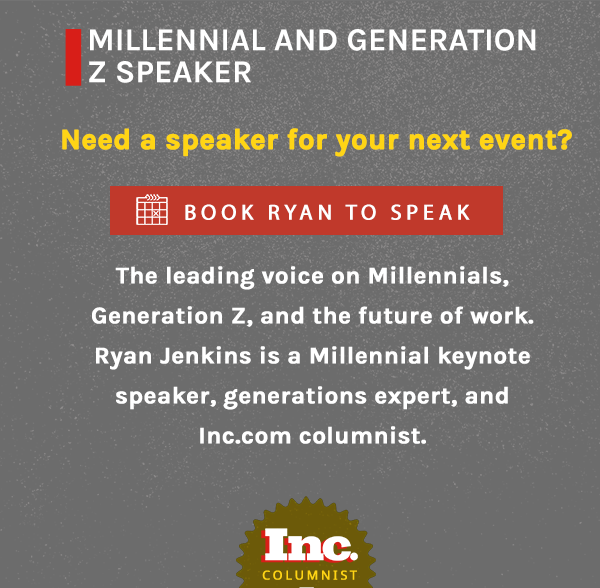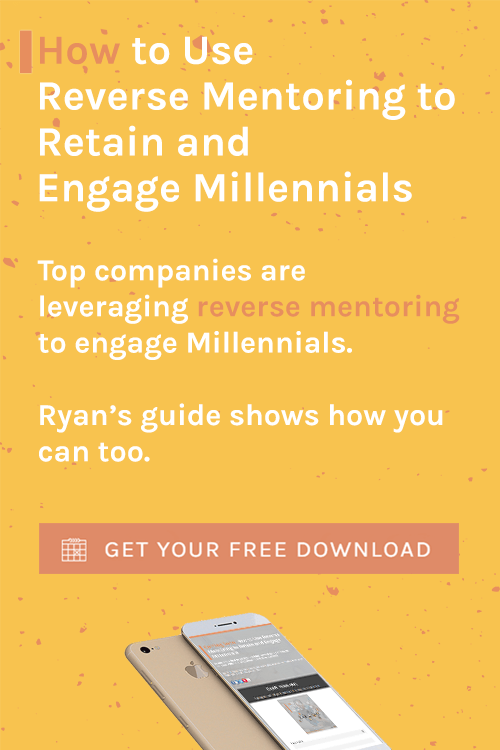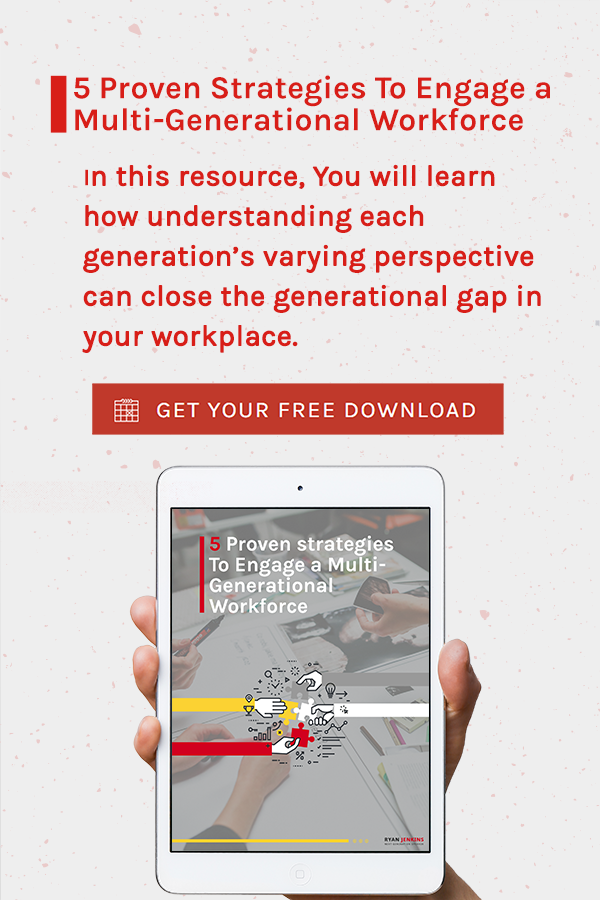How gaming, the Internet, and mobile technology rewired an entire generation. This exhaustive timeline will help you better understand Millennials.

Maturity is the ability to see and act on the behalf of others. Immaturity is not seeing things from someone else's point of view.
It's natural for Millennials to exude immaturity in the workplace because they lack the necessary context and experience. But unfortunately, it's all too common for leaders of Millennials to also be immature.
Leaders of Millennials aren't immature in their experience, knowledge, or skills but rather on seeing the world from the perspective of Millennials. The digital age has fundamentally rewired Millennials.
Millennials' unprecedented digital upbringing has made it difficult for experienced leaders to see the world from their point of view. This results in leaders becoming frustrated and defaulting to correcting instead of connecting.
Correcting positions the leader as a nit-picking and authority-hungry parent figure. Connecting positions the leader as a wise coach.
Which would you prefer to follow?
The below will provide you with the abbreviated story of the Millennial generation. The goal is to give you a better understanding of who this generation really is so that you are better equipped to connect and lead them.
Millennials aren't trying to be difficult or frustrate you on purpose. They have had a very different upbringing (one the world has never seen) which has created a new breed of worker and thus a new breed of leader is needed to effectively and influentially lead them.
The Life Of Millennials: A Timeline That Reveals How the Digital Age Shaped Them
For you to more clearly see the world from the Millennial perspective, let's look at a fictitious example of one Millennial...we'll call him Millennial Mike.
The timeline covers pivotal innovations in the life of Millennials and how it's shaped their view of life and work. Each section includes a company example to highlight how companies are adapting to the unique Millennial mindset.
1990: Millennial Mike is born.
1997: Millennial Mike grows up gaming.
At age 7, Millennial Mike is enamored with Nintendo 64. The Millennial generation grew up gaming and it fundamentally rewired how this generation approaches work, teams, and communication. Gaming offers constant feedback loops, opportunities to make a difference by saving the world, and global collaboration as Millennials put on a headset and game alongside peers halfway around the world. All of these are now expectations Millennials pull into the workplace.
- Millennial Mindset: Millennials desire feedback, making a difference, and diverse collaboration thanks to gaming.
- Innovation Influencer: Nintendo
- Company Example: Applebee's, the national chain of casual dining restaurants, used a game called Bee Block to have employees collaborate and compete on metrics like getting to work on time, selling special menu items, and completing quizzes about company rules. The game led to a 20 percent reduction in staff turnover and larger average tickets.
2000: Millennial Mike is introduced to the World Wide Web.
At age 10, Millennial Mike first hears about online chat rooms. Mike and his friends deal with the sluggish and bizarre sounds of dial-up modems to create an AOL (America Online) username to begin chatting with the world. Millennials become the first generation in history for whom digital technology platforms are the essential mediators of social life and information acquisition. Millennials have not had to adapt to technology because it's all they've ever known. They have a knack for technological adaptability.
Digital technology has fundamentally shaped their friendships, perspective of the world, structure of their social networks, how they learn, how they interact with brands and institutions, and how they allocate their time. Millennial Mike has become a digital native and will soon carry his new disruptive perspectives and values into the workplace.
- Millennial Mindset: Millennials approach differently how they learn, work, socialize, buy, communicate, and play due to technology.
- Innovation Influencer: AOL
- Company Example: Airbnb, the online marketplace and hospitality service, has a "chief employee experience officer" whose job it is to rethink how employees learn, work, socialize, communicate, and play. Other companies like Cisco and Pandora have similar job functions.
2004: Millennial Mike uses the Internet with ease.
At age 14, Millennial Mike has access to Google while in high school and leverages the Internet to do the legwork for major projects. The world's information is now at his fingertips and aggregated by Google. Libraries become ghost towns as online resources such as SparkNotes and Wikipedia become shortcuts for learning material. Mike also joins one of the first social networks, MySpace, but begins to hear rumblings of another college-only social network.
- Millennial Mindset: Millennials are the first generation that didn't consider parents or teachers as the authority but rather the Internet. They treat the Internet as their external brain and approach problems in a whole new way from previous generations.
- Innovation Influencer: Google
- Company Example: Angela Ahrendts, the previous CEO of Burberry, saw an opportunity to leverage the different thinking and resourcefulness of Millennials and created a "Strategic Innovation Council" where Millennials came together once a month with company leaders with the single goal to innovate Burberry's future.
2005: Millennial Mike goes social.
At age 15, Millennial Mike joins Facebook (which launched in 2004 but opened to high school students in 2005) and he quickly amasses thousands of "friends." Millennials leverage social media to consume, collaborate, and contribute.
Also this year, Mike's parents decide to give him a cell phone for two primary reasons: safety and logistics. It takes Mike's parents one month to regret their decision because Mike discovered texting (T9 style) and the phone bill sky-rockets due to thousands of texts sent.
- Millennial Mindset: Millennials are early adopters (ex: social media, cell phones, and texting) and seek opportunities to innovate especially as they enter the workforce.
- Innovation Influencer: Facebook
- Company Example: LinkedIn has an internal incubator where employees are encouraged to innovate. Once a quarter, employees can come up with a new idea, put a team together, and pitch their idea to the executive team. If their idea is approved, they are able to spend up to three months dedicated to turning the idea into something that benefits the company.
2007: Millennial Mike participates in the mobile revolution.
At age 17, Millennial Mike is fortunate enough to have parents who buy him the first generation iPhone. A big part of the success of the iPhone was it catered to Millennials with its multi-touch interface, virtual keyboard with automatic spell check and correction, predictive text technology, and the ability to learn new words.
On the heels of the iPhone launch, 2007 was the first year that Americans sent and received more text messages per month than phone calls. Millennials channel their previous AOL instant messaging days to mainstream texting and usher in a dominate new communication medium.
- Millennial Mindset: Millennials' (and every other generation's) communication has and will continue to be shaped by technology.
- Innovation Influencer: iPhone and texting
- Company Example: The non-profit organization that provides clean and safe drinking water to people in developing nations, Charity: Water, has changed how they communicate internally by eliminating email and instead using Slack, an easy-to-use messaging platform, to make their workplace communications more dynamic, modern, and next-generation ready.
2008: Millennial Mike establishes himself online.
At age 18, Millennial Mike joins Twitter as it gains traction with the adoption of the short character format and as a micro-blogging platform. Twitter opens Mike's eyes to the power of blogging so he starts a blog on Tumblr where he shares his passions on a public and global platform. Growing up with access to the Internet has empowered Millennials to contribute and have a voice.
- Millennial Mindset: Millennials are contributors (not passive consumers or employees) looking for an active role and immediate impact.
- Innovation Influencer: Twitter and blogging
- Company Example: AT&T recently charged a Millennial team to produce and host a company podcast (titled "Life at AT&T") that provides a behind-the-scenes look at what it's like to be an AT&T employee. AT&T used the launch of their podcast as a way to empower Millennials to be contributors.
2011: Millennial Mike leverages his network.
At age 21 and a senior in college, Millennial Mike sets his sight on getting a job and begins cleaning up his online reputation. Mike begins leveraging his robust social networks (Facebook, Twitter, and LinkedIn) to crowdsource his major life decisions. He asks his network where to live, what to eat, what to buy, and where to apply for a job. Millennials value lifestyle and relationships over work which is why it's not unusual for Millennials to choose a city before securing a job.
- Millennial Mindset: Millennials are heavily persuaded by their peers. Constantly turning to their networks for new opportunities, to stay in touch, connect with a brand, and to acquire news.
- Innovation Influencer: LinkedIn and crowdsourcing
- Company Example: Zendesk, a HR software company, created a recruiting video that not only highlighted the workplace and actual employees, but they showcased the city in which the employee would work. They highlighted the coffee shops, bars, public transportation, etc. which appealed to Millennials' lifestyle value.
2014: Millennial Mike owns his career.
At age 24, Millennial Mike is a young professional who has already had 2-3 different jobs. Glassdoor.com, a website that gives people the inside scoop on companies with employee reviews, salaries, benefits, and more, has created complete transparency in the job market where Mike knows what companies can offer him a better fit and salary.
Facebook friends and YouTube videos offer exposure into what it's like to work at other companies and LinkedIn provides the platform to connect with anyone at that company. Today's connected and transparent culture no longer allows companies to pull the wool over the eyes of their employees, instead it's keeping them accountable to deliver exceptional employee experiences in order to retain top talent.
- Millennial Mindset: Millennials demand transparency from leaders, employers, and brands.
- Innovation Influencer: Glassdoor
- Company Example: Mastercard, the multinational financial services company, allows Millennial new hires to choose the leaders they want to work for. Transparency and accountability is created by leaders having profiles that include reviews and ratings.
2016: Millennial Mike disrupts routinely and unknowingly.
At age 26, Millennial Mike is beginning to settle in as a professional, and technology continues to influence his life at work and home. For example, Netflix and Amazon have created an on-demand generation of consumers, Snapchat has disrupted the way an entire generation communicates much like the intro of the iPhone did, Uber and Airbnb have created a generation that appreciates the share economy ("why own when I can rent or share"), and Slack--a messaging app for teams that Inc.com rated as their 2016 Company of the Year--has enabled collaborative and real-time workplace communications which Millennials have come to expect.
Technology has and will continue to create new behaviors and values that have never existed before. Technology coupled with Millennials will usher in unparalleled and unavoidable disruption into every industry and workplace.
- Millennial Mindset: Millennials work/life behavior and values continue to be shaped by technology.
- Innovation Influencer: Netflix, Amazon, Uber, Snapchat, Airbnb, Slack
- Company Example: Taco Bell, the American chain of fast-food restaurants, is considering Uber-izing their front-line employee experience. Taco Bell employees not scheduled to work could use an app to see what restaurants in their area might need extra help during the peak lunch-time hours. Employees would check-in via the app and get paid a premium for helping out for a few hours. This approach mirrors how Uber drivers can simply decide when to turn on or off the app based on their availability.
2017: Millennial Mike becomes a decision-maker.
At age 27, Millennial Mike has been working for several years and is on the verge of accepting his first leadership role. In fact, according to The Atlantic, 30% of 21-32 year-olds have already achieved a management position. How will your organization or industry change when these high-tech and hyper-connected Millennials begin making leadership decisions?
- Millennial Mindset: Millennials high-tech and hyper-connected upbringing have made them disruption-prone leaders.
- Innovation Influencer: To be determined.
- Company Example: Bacardi recently created the Bacardi Rising Stars program where emerging Millennial leaders will be equipped with the knowledge, expertise, and experiences to prepare them to be future leaders. All the while encouraging them to innovate and disrupt the organization from the inside out.
Millennials are a new breed of employee because they had an upbringing like no other in history. Use this new understanding of the Millennial journey and evolution to influence how you lead, connect, and communicate with the next generation workforce.
(Discover more generational strategies in Ryan's new book, The Millennial Manual: The Complete How-To Guide to Manage, Develop, and Engage Millennials at Work.)
Consider Ryan Jenkins to be your next Millennial or Generation Z keynote speaker by clicking here...
![]()
This article was originally posted on Ryan's Inc.com column, Next Generation Insights.





